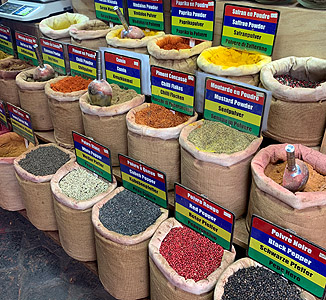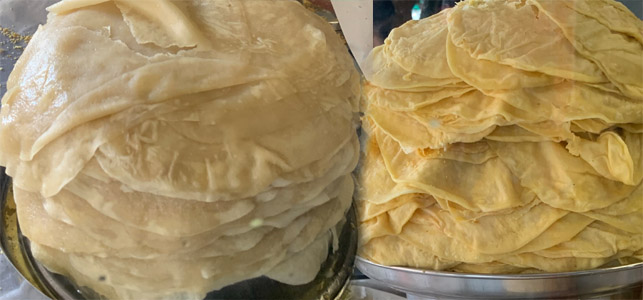Mauritian Cuisine
Mauritian cuisine is a melting pot of flavors, blending the traditional dishes of its various ethnic groups with a touch of French and Chinese influences.
This unique blend of tastes and textures is a true reflection of the island's rich cultural heritage and is a must-try for any food lover visiting Mauritius.
The unique cuisine of Mauritius is something that’s utterly beloved by both visitors and natives. From the multicultural influences of a number of different nations to the excellent access to impeccable ingredients, the food traditionally cooked in Mauritius leaves nothing to be desired.
The history of Mauritian cuisine
Countries around the world serve food that has been influenced by the citizens - Mauritian cuisine is no exception. The specific culinary traditions of Mauritius are notable for being great examples of the blending of cultures.
Mauritius is a small island, meaning that many cultures have lived in close quarters for a long time. In turn, this has meant that there has always been a culture of culinary sharing, leading to the tantalizing melting pot of modern Mauritian cuisine.
Local communities in Mauritius have swathes of traditional dishes. The borders between communities have been where impressive mixing has happened. People borrow and adapt recipes to their own tastes, leading to diversity in very small spaces.
Influences from different ethnic populations
The main influences on Mauritian cuisine are African, Chinese, French, and Indian food. These cultures all arrived on the island at different times throughout its history, so they have slightly different types of impacts on the food of the island.
French culture and former African slaves had an impact on the food of the island at much the same time due to French colonization and slavery. This means that it’s quite common to see French techniques and African spices in the same meal, leading to a mouth-watering combination.
Indian workers and Chinese migrants arrived in Mauritius during the 19th century, which was a little after the original infusion of French and African techniques. These people bought their own spices and culinary traditions to the island, at first keeping their own recipes to their own regions in a major way.
Over time, though, the people of the island mixed more and more, finding themselves making friends, as humans love to do. These relationships led to the sharing of different types of food, which led to twists and turns upon traditional recipes from immigrants’ ancestral countries. It was in these twists and turns that true Mauritian cuisine was born.
The most common influences on Mauritian cooking come from French and Chinese people and recipe books. These wildly different styles of cooking and seasoning are seamlessly bought together, forming a cuisine with unique, complex, and delicious dishes.
Common local dishes, both home-cooked and street food
The typical stable carbohydrate in Mauritian cuisine is rice, which is found almost everywhere. It can be boiled, fried, steamed, and anything else you can imagine doing to rice. Chinese noodles are also wildly popular in Mauritius and are also served, as rice is, as a side dish to the main meal.
Mauritius is largely known for its wonderful sauces and curries. These can be served with meat, seafood, or vegetable dishes and are wildly different from other curries from around the world.

The primary difference between Mauritian curries and Indian or Thai curries is that they rarely contain coconut milk, a staple in most curries worldwide. Furthermore, they typically contain aromatic European herbs, such as thyme. The curries also use a larger variety of meat and seafood than other curries, often containing octopus or duck.
There is a decadent culture of great street food in Mauritius, too, with both sweet and savory options up for grabs.
A great savory option is Gato Piment - literally, ‘chili cake’. These are a type of spicy fritter that’s made with split peas that are combined with chili. These are really popular snack foods and are regularly eaten as part of street food.
Another delicious option is the Merveille. These are very similar to beignets, being orange-infused fried cookies. They’re bright, warming, and wonderfully rich without being liable to spoil a meal. They are often served with satini, which is a type of aromatic tomato chutney.
Samosas are also a large part of the street food culture of Mauritius, with their Indian heritage shining through in the seasonings and recipes. People will often have different recipes handed down through their families, and sampling samosas from different people is a must-do.
Impressive local ingredients
Arguably, Mauritian cuisine's most impressive ingredient is veggies' innovative and unique use. So often, vegetables are used in such an interesting way that is utterly different from the methods that might be used in other countries.
Some commonly used ingredients are okra (also known as lady’s finger), eggplants, garlic, and chilies. These are all heavy-hitters of ingredients that are used around the world in a number of different cuisines but never quite how they’re used in Mauritian food.
The unique use of eggplant in Mauritius is a great example of the singularity of Mauritian cuisine. Around the world, eggplant is commonly used in stews thanks to its ability to soak up flavors in a meal easily. In Mauritian cuisine, though, it’s used in a number of ways - as a fritter in some recipes, mashed in others, and sauteed with potatoes and spices in others.
Commonly, a wide variety of seafood is used, as with a number of island cuisines around the world. Notably, salted fish and smoked blue marlin have unique charms, leading to dishes that simply have to be sampled while you’re on the island.
When it comes to recommendations, Rougaille is something that must be eaten. This is a French-influenced dish from Mauritius that’s essentially a rich, tomato-based, heavily spiced sauce that’s built around some form of protein, whether seafood, meat, or a vegan alternative. Make sure to seek some out while you’re in Mauritius!
There’s also the classic Mauritian Biryani, which is different from Indian biryani through the use of spices like saffron, mint, and cinnamon. In Mauritius, there are specialized chefs that only cook great Mauritian biryani - they’ve spent years mastering it. Sampling the dish is a must, thanks to its unique and divine flavor.
Dholl Puri is likely the most common savory recommendation - it’s a pancake that’s made with ground split yellow peas and then wrapped around curry in a similar style to a tortilla. It’s really popular street food in Mauritius, thanks to the fact that it’s simple, flavorsome, and dangerously moreish.

Alouda is a great way to beat the heat in the summer of Mauritius - it’s a cold drink that’s made with milk, basil seeds, and agar-agar. It’s thick, smooth, creamy, and rich. The only way to describe it would be to compare it to a whipped ice cream milkshake - though it feels less decadent: it would be easy to sip on for hours at a time.
Mauritian cuisine is unparalleled around the world. It’s one that you’ll love to sample around the island - you can be sure of two things: you’ll never get the same thing twice, and you’ll always want to go back for seconds!